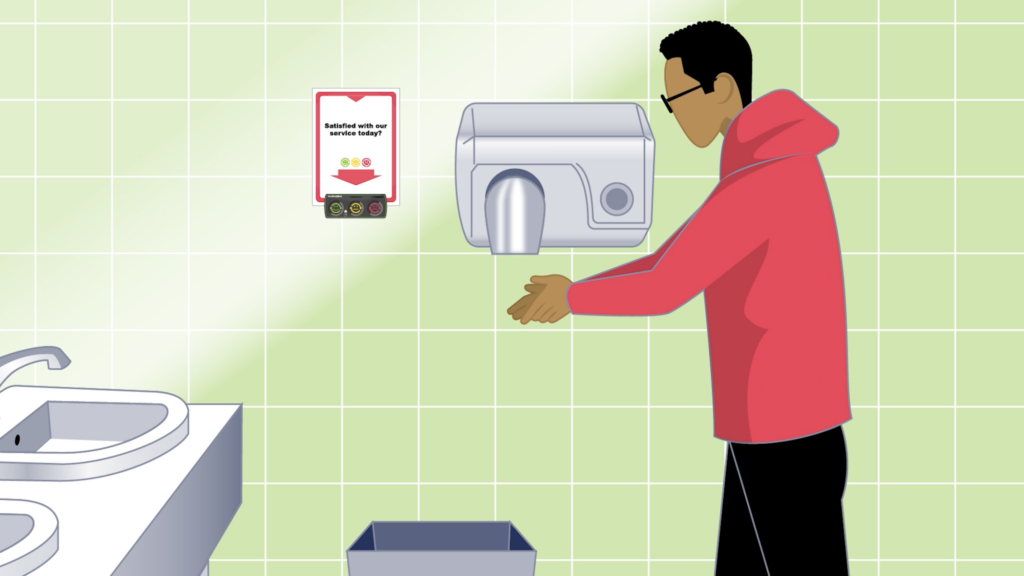
Does anything actually happen when you push the button?
We’ve all seen them.
“How was your experience?” accompanied by some number of smiley faces to press so that you can communicate how you feel about a service or process you just experienced.
You’re left wondering if this is just a ploy to give the impression that the company cares and the data just goes to a server somewhere, never to be seen again. Does my vote really make a difference?
While we can’t explain what goes on with every smiley solution out there, because they’re all different, we can tell you how FeedbackNow clients are using our Smiley Boxes® to revolutionize their customer experiences and operations in amazingly advanced ways.
Let’s break it down:
Our approach is to ask for feedback at the exact time and place of the experience to get authentic reactions. Our devices make it simple and easy to respond, which maximizes the volume of responses. Then, we bring in other relevant real-time data to go a layer deeper to help identify trends or patterns.
All of this data is collected in a powerhouse AI system that detects trends and alerts the staff when and where dips in satisfaction occur, so swift action can be taken to prevent further decline.
There are built-in safeguards with custom-timed “gates” in which clicks can be accepted. Software algorithms look for abnormal vote patterns and remove this data. A child playing with the device or an angry customer pressing Red quickly twenty times will only result in one vote. Ultimately, we’re looking for patterns and trends, so individual abnormal presses don’t really affect the result.
Some of our clients use this data reactively to deploy their teams when needed and some use these alerts to notify their teams when the conditions are trending downward so they can take action before overall customer satisfaction is impacted.
Let’s look at some examples of how our current clients are using FeedbackNow:
Scenario One: A major travel stop in the US uses FeedbackNow to determine the correlation between usage and customer satisfaction. When X customers use a facility in Y minutes, they know that’s when “Reds” start to appear. So, rather than clean these facilities on a regular cadence, they deploy crews to clean right before this threshold is reached.
Result: Their customers have a better experience because their facilities stay clean and they optimize their resources by deploying them only when needed.
Scenario Two: A large US airport uses FeedbackNow to collect sentiment at the very end of the security line. They then correlate this data with wait-time averages to determine how long wait times can be before “Reds” start to predominate. Now they know the optimal time to open a new line and/or add staff. They can also explore if and how other factors affect wait-time tolerances, such as traffic near the airport and weather.
Result: Their customers have a better experience because the airport knows when the conditions are right for sentiment to decline and can act before that happens.
Scenario Three: A world-renowned hospital puts FeedbackNow in patient rooms and instructs patients to leave feedback whenever they want. They have alerts set so one touch of the red button is going to bring housekeeping to their room immediately.
Result: The patients have a rare element of control in an environment they otherwise have very little control in.
While some businesses may use smiley devices to give the impression that they care, it’s our experience that the companies that are investing in this technology are actively working to understand and improve
the experiences their customers have with their business.
So – the next time you see one of our devices, you can vote knowing there is someone on the other end receiving your feedback and you are helping improve your experience, and the experience of those around you, in real time.
Check out feedbacknow.com for more info.

